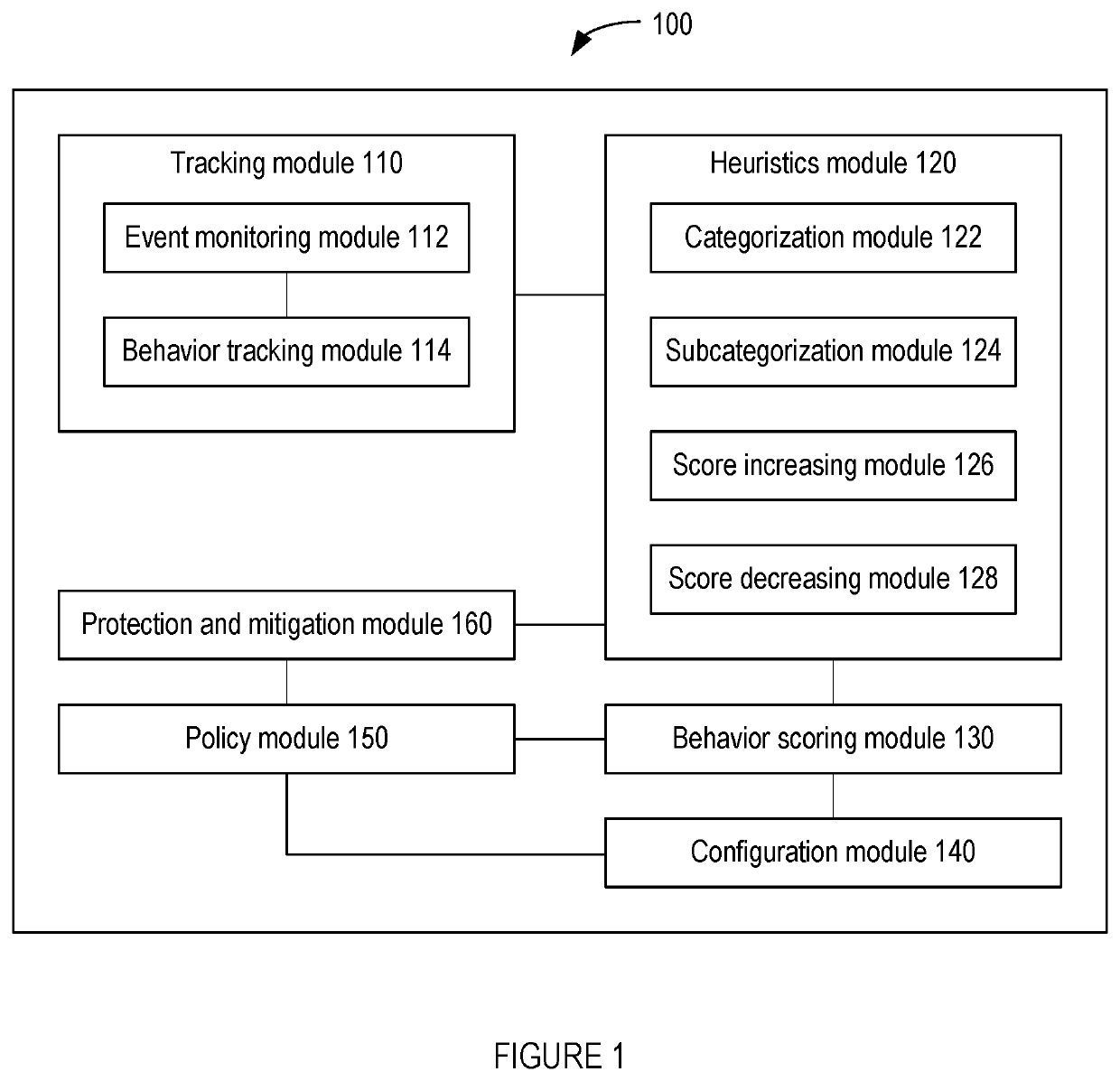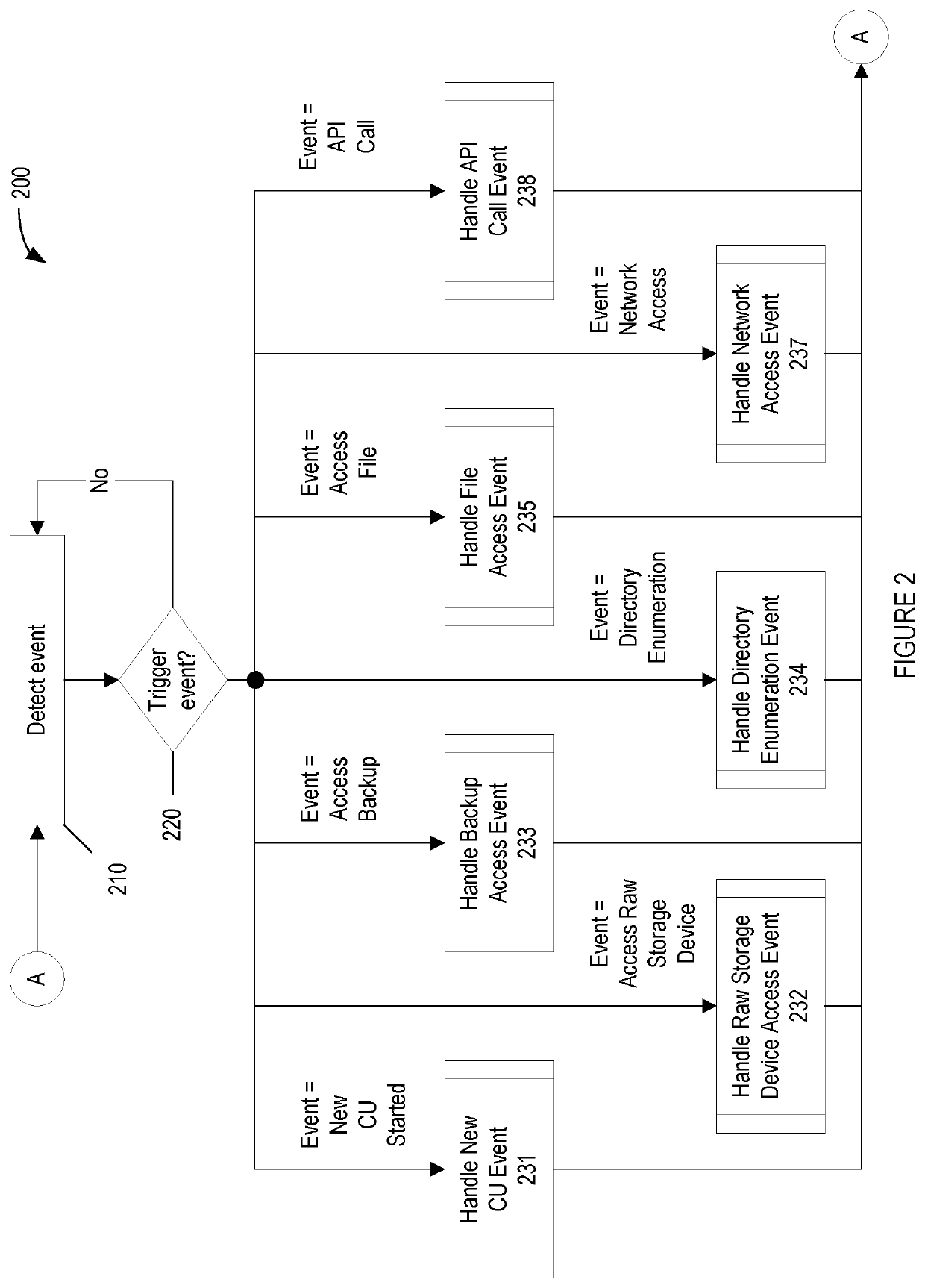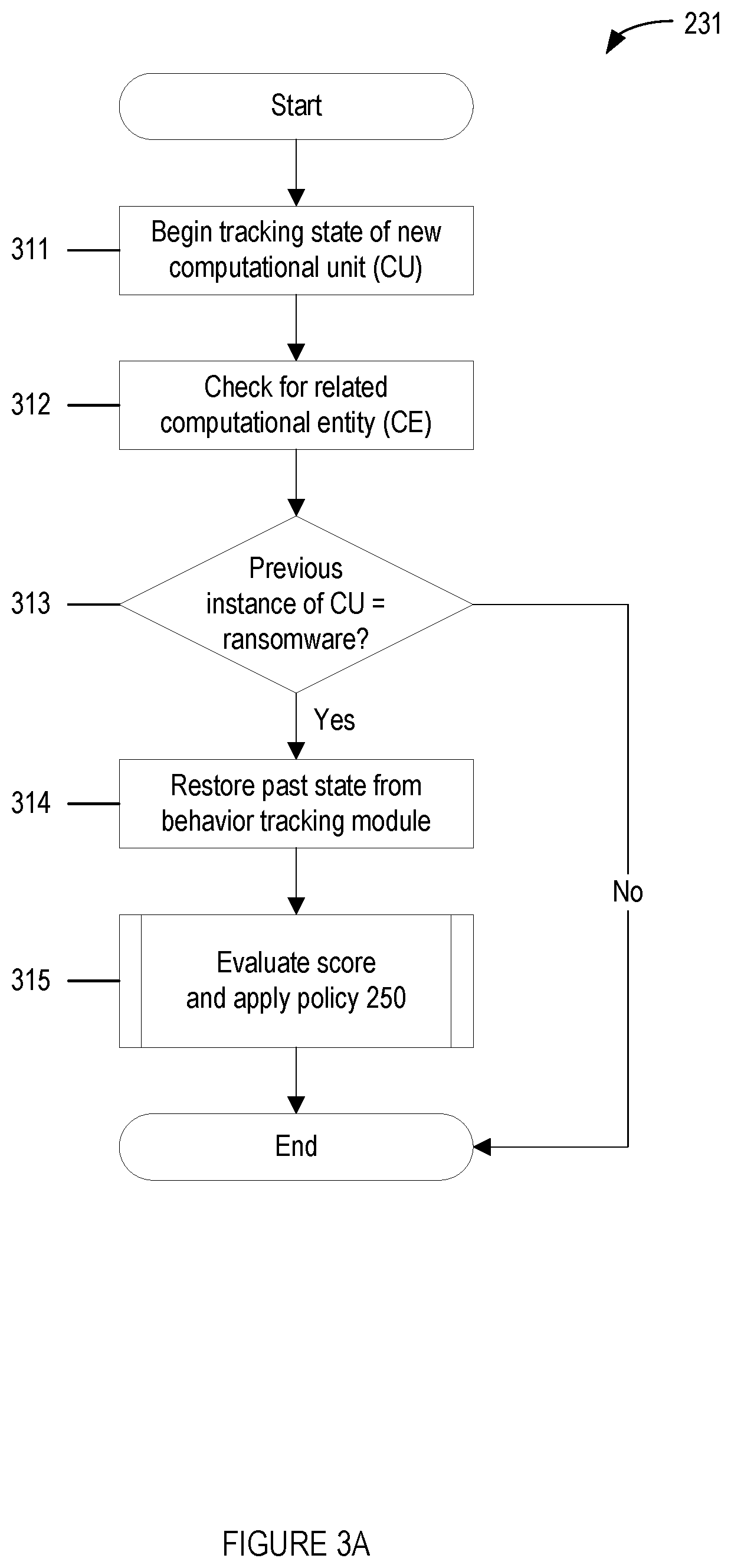Methods for behavioral detection and prevention of cyberattacks, and related apparatus and techniques
a cyberattack and behavioral detection technology, applied in the field of computer security systems and techniques, can solve the problems of significant degrading of the host computer system's performance, trade-off between false and false, and achieve the effect of reducing the amount of computing resources used, reducing the false positive rate of behavioral ransomware detection techniques, and reducing the false negative rate of ransomware detection
- Summary
- Abstract
- Description
- Claims
- Application Information
AI Technical Summary
Benefits of technology
Problems solved by technology
Method used
Image
Examples
Embodiment Construction
Threat Detection and Response
[0049]Referring to FIG. 1, a behavioral security engine 100 may include a tracking module 110, a heuristics module 120, a behavior scoring module 130, a configuration module 140, a policy module 150, and a protection and mitigation module 160. The tracking module 110 may include an event monitoring module 112 and a behavior tracking module 114, The heuristics module 120 may include a categorization module 122, a subcategorization module 124, a score increasing module 126, and a score decreasing module 128.
[0050]The behavioral security engine 100 may be a component of a cybersecurity engine, and its modules may cooperate detect potential threats from threatware, including file-based threats and / or fileless (e.g., streaming) threatware threats, by monitoring and analyzing events (e.g., stream of events) on a computer system (e.g., an endpoint computer system). The behavioral security engine's components may also cooperate to respond to detected threats. So...
PUM
 Login to View More
Login to View More Abstract
Description
Claims
Application Information
 Login to View More
Login to View More - R&D
- Intellectual Property
- Life Sciences
- Materials
- Tech Scout
- Unparalleled Data Quality
- Higher Quality Content
- 60% Fewer Hallucinations
Browse by: Latest US Patents, China's latest patents, Technical Efficacy Thesaurus, Application Domain, Technology Topic, Popular Technical Reports.
© 2025 PatSnap. All rights reserved.Legal|Privacy policy|Modern Slavery Act Transparency Statement|Sitemap|About US| Contact US: help@patsnap.com



